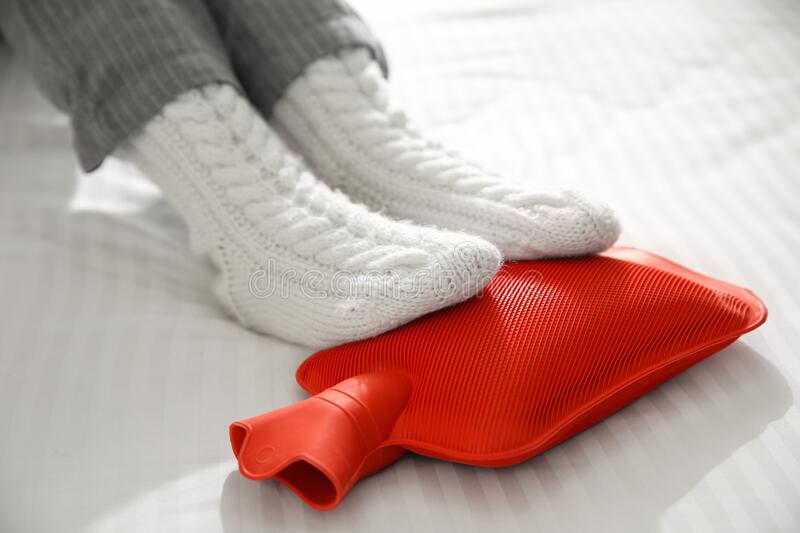The first hot-water bottle was red
A tire manufacturer released the first rubber-model, hot-water bottle with a screw-on cap in 1920.
“If you are tormented by discomfort, and your well-being is reduced, I advise you: reach into your pocket and buy a hot-water bottle. And then make the right choice: the Continental hot-water bottle!,” read the advertisement for the new product.
A trade journal at the time, the Gummi Zeitung was also enthusiastic about it: “Who hasn’t stood in front of their bed and hesitated to slide into the cold sheets, like a diver in front of an icy lake in which he has to dive? But, now you know, beneath the forbidding surface lies a brilliant midnight sun.”
The rubber bottles were a huge success: 500,000 of these heat dispensers were manufactured every year until the end of the 1990s, when production was stopped due to competition from Asia.
Heat balls, pewter warmers and other bed warmers
Before this invention, people had already found ways to create transportable heat sources. As early as the 9th century, monks used so-called heat balls made of iron, silver or even gold. They were filled with smoldering charcoal or heated clay and aimed to warm cold feet and hands during church services.
Stones were also used. They were put in the fire for a while and taken to bed in the evening to warm the damp blankets. The same technique was used in postal carriages, at the theater or while working at a desk. The stones were wrapped in blankets to avoid burns. But accidents still happened.
The pewter bed warmer was then invented in the mid-16th century. It was filled with hot water and sealed with a screw cap.
Two centuries later, pewter was replaced by copper, which conducts heat better. However, only richer households could afford it, as copper was anything but cheap. In poorer families, the pot of boiling soup was put on the bed to warm the sheets.
An even fancier bed warmer, with a lid and handle, was developed by a coppersmith called Schulder. He lived in Paris but came from cold, damp Germany. On November 11, 1808, he applied for a patent for his “bed warmer,” a fireproof pan that could be filled with charcoal or hot stones. It was immediately recommended by the “Frauenzimmer-Lexikon,” a book with tips for housewives, and was soon available in many cold bedrooms — to help with ice-cold feet and shivering limbs.
Why many women freeze more easily than men
It has actually been scientifically proven that women freeze faster than men. A higher proportion of muscles changes a person’s perception of cold, since muscles produce heat that is distributed throughout the body. Muscles make up about 40% of a man’s body compared to an average 25% for women. In a way, men have their own built-in furnaces that warm them from the inside. For my part, I have to rely on hot-water bottles.
Ready for the winter
Those models were then replaced by the hot-water bottle as we know it today. The flexible rubber easily clings to the freezing body. They are available in many colors and sizes, covered with fleece or faux fur, taking on the shape of a cuddly bear or a cat.
Yes, in the end, I did buy the one with the cat design after all. It stays warm for about an hour. At least I have a trick from my grandmother, to add a spoonful of salt to the water. That allows the hot-water bottle to stay warm longer. And if I still get cold, I can always slip my cold feet around my husband’s. Winter can come.
This article was originally written in German.











